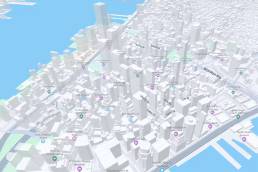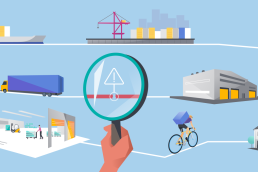Technological disruption has come to many industries of late. But far from being a negative development, each wave of disruption has created new opportunities, led to the formation of innovative companies, and unlocked unforeseen benefits for consumers. This is certainly the case in the transportation sector.
Most recently, there has been a great deal of excitement around the emergence of a genuine “Transport as a Service” (TaaS) model. Also known as Mobility as a Service, this would involve the integration of multiple transport services into a single, unified offering. As the transportation sector has become more fragmented, incorporating public transport, ride-hailing apps, private car use, and, of course, walking, cities have found it increasingly difficult to manage demand from a growing urban populace.

The issues caused by the lack of a unified transportation system are widespread. In terms of traffic, for example, recent research has found that the average delay faced by US commuters as a result of congestion has more than doubled since 1982. The economic and environmental impacts that accompany these delays can significantly diminish urban life too. But with urbanization set to increase – 68% of the global population is expected to reside in cities by 2050 – hope is at hand in the form of TaaS disruption.
How to unlock TaaS disruption
It is often the case that one form of disruption leads to another. When Uber first emerged on the scene – it was founded as Ubercab in 2009 – the idea of planning a journey using digital tools was a pretty alien concept. Today, more than 93 million people use the Uber app every month and online mapping tools are ubiquitous. However, there remains a lack of connectivity between the various transport tools available.
For TaaS to work as a viable value proposition, it will first require access to transport data – and lots of it. This includes data related to route optimization, telematics, fleet management, and real-time traffic updates. This data can be utilized to reduce journey times even as the number of individuals making the journey – whether by road, rail, or foot – increases. In fact, route optimization alone has the potential to reduce mileage and driving time by between 5 and 15%.
However, data will not make TaaS a reality by itself. A digital platform is needed too, one that bicycle rental firms, ride-hailing companies, public bodies, and automotive manufacturers can all tap into – essentially, anyone involved in the transportation sector. This needs to be accessible, standardized, and secure. Fortunately, the beginnings of a TaaS ecosystem is emerging – in some cities more than others.
In Helsinki, for example, residents have been able to use a single app, Whim, to plan and pay for their journeys, regardless of transport mode – including train, taxi, bus, carshare, or bikeshare since 2016. London’s bicycle rental scheme also offers potential for TaaS platforms to exploit in the form of public-private partnerships. Here, well-known banks contribute around 10% of the cost for the rental scheme (plus additional funding to expand the program), benefitting from advertising exposure and the collection of customer data. It highlights the mutual advantages that can emerge from a fully integrated TaaS platform. With the Transportation as a Service market projected to be worth $40.1 billion by 2030, up from an estimated $3.3 billion in 2021, this growth is something that everyone can benefit from.

Scalable – but sustainable
The changes that TaaS will bring to cities worldwide will be truly transformative. It will be driven, not only by the mass adoption and integration of data but also by the emergence of autonomous electric vehicles. Looking at the US alone, TaaS will save the average family more than $5,600 per year in transportation costs – equivalent to a wage increase of 10%.
And, perhaps, most impressively, TaaS will lead to greener, more environmentally friendly cities, even as they further their expansion. A TaaS ecosystem will reduce energy demand by 80% and tailpipe emissions by over 90%, despite enabling the transport sector to deliver 50% more passenger miles by 2030 compared to 2021. Urban mobility will consist of fewer cars, traveling more miles, surrounded by cleaner air. That’s the kind of disruption that we should all get excited about.



